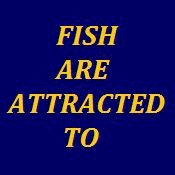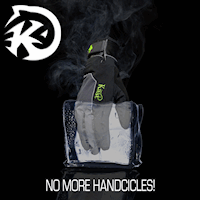HATCERY FISH EATING LISTED CHINOOK
Washington Trout, Native Fish Society File ESA Suit
Coho salmon and steelhead trout released from State hatcheries in Puget Sound are killing and eating federally protected wild chinook salmon. That makes the hatchery releases illegal under the Endangered Species Act. Washington Trout and the Native Fish Society have filed suit in federal court to stop the Washington Department of Fish and Wildlife from releasing the hatchery fish into Puget Sound streams.
“These hatchery programs helped drive Puget Sound chinook onto the Endangered Species List, and they've been violating the ESA for over two years,” said Kurt Beardslee, Washington Trout Executive Director. “We want WDFW to reform its hatchery management to stop harming Threatened chinook.”
Puget Sound chinook were listed as Threatened under the ESA in 1999. The National Marine Fisheries Service, which enforces the ESA, has acknowledged that hatcheries have been a factor in wild-salmon declines, and that hatchery operations and facilities can harm and even kill listed salmon. Under the ESA it is illegal to harm, harass, kill, or otherwise “take” a listed species.
Hatchery coho and steelhead juveniles are preying on wild chinook juveniles during the period when the young fish share the same freshwater and estuary habitats. That makes the release of the hatchery juveniles an illegal take. NMFS has cited what it calls “substantial” evidence that hatchery fish prey on wild salmon, and WDFW has acknowledged in written documents that predation on listed chinook from hatchery juveniles “undoubtedly occurs.”
The hatchery juveniles are released during the spring, after the young chinook have emerged from the gravel nests where they hatched from eggs laid the previous fall. The young wild salmon spend several weeks to several months in freshwater before migrating to sea. They are quite vulnerable during this period, and can be overwhelmed by large numbers of hatchery juveniles released all at once into a watershed. The hatchery coho and steelhead are generally larger and more aggressive than their wild counterparts, and much larger than the young chinook. Hatchery coho juveniles can be up to 174mm long and eat other fish up to 46% their own size; hatchery steelhead are released at lengths up to 200mm, eating fish up to 44% their own size. The wild chinook fingerlings are nearly all under 60mm, or less than 31% the size of the hatchery fish.
The problem can be significant. A California study reported that 532,000 hatchery salmon consumed 7.5 million wild chinook fingerlings in the Feather River. Each hatchery juvenile ate an average of 14 wild salmon. If each hatchery coho or steelhead released into Puget Sound streams consumed just one listed chinook, Washington Trout estimates the loss at approximately 5.7 million wild salmon. Significant predation on threatened chinook juveniles by WDFW hatchery coho and/or steelhead occurs in virtually every river system in Puget Sound.
The lawsuit targets 30 WDFW hatchery programs in Puget Sound that produce steelhead and coho to subsidize commercial and recreational fisheries. They have no positive role in chinook recovery. Washington Trout and Native Fish Society filed the suit on March 19, after an official 60-day notice period. On March 20, the groups filed a preliminary motion seeking an injunction to stop WDFW from releasing any coho or steelhead this spring, while the case is pending.
“Releasing hatchery coho and steelhead according to current plans is clearly illegal and could cause irreparable damage to Puget Sound chinook,” said Bill Bakke, Executive director of the Native Fish Society. “It's important to stop until all the issues are sorted out.”
WDFW could apply to NMFS for an ESA exemption for the hatcheries. In June 2000, NMFS adopted a so-called “4d Rule,” outlining ESA regulations for Puget Sound. The 4d Rule included application guidelines to qualify hatchery programs for exemption from some ESA regulations. The applications would explain how WDFW plans to end or minimize harm caused by the hatcheries, or explain how any benefits from the hatcheries might justify that harm. While they have been overdue since January 2001, WDFW has not submitted an application for any of its Puget Sound coho or steelhead hatcheries. If and when the applications are submitted, they will be subject to lengthy agency and public-review processes before WDFW qualifies for the exemption.
Seattle attorney Richard Smith, of Smith & Lowney PLLC, is representing the two organizations. “WDFW has had plenty of opportunity and more than two years to explain how they will fix these problems,” said Smith. “So far they have not taken advantage of those opportunities, while their hatchery programs continue to jeopardize the recovery of Puget Sound chinook. We want them to comply with the law, one way or another.”
For more information, contact Ramon Vanden Brulle at Washington Trout. Filings in the case will be posted on the Washington Trout website (
www.washingtontrout.org) as soon as possible.
Ramon Vanden Brulle
Washington Trout
PO Box 402
Duvall, WA 98019
425/788-1167; fax 425/788-9634
ramon@washingtontrout.org
www.washingtontrout.org












 Previous Topic
Previous Topic Index
Index



